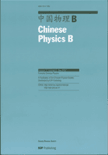
Chinese Physics B
Scope & Guideline
Exploring the depths of physics with open access insights.
Introduction
Aims and Scopes
- Condensed Matter Physics:
Research in this area includes studies on electronic properties, magnetism, superconductivity, and quantum phenomena in various materials, particularly those that are two-dimensional or involve complex structures. - Quantum Physics and Information:
This encompasses quantum mechanics, quantum computing, and quantum information theory. The journal publishes studies on entanglement, quantum key distribution, and other quantum technologies. - Nanotechnology and Materials Science:
Investigations related to the synthesis, characterization, and application of nanomaterials, including nanoparticles, nanowires, and thin films, are a significant focus of the journal. - Optical Physics and Photonics:
Research on light-matter interactions, including studies of lasers, optical devices, and nanophotonics, is prevalent, reflecting the journal's interest in advancing optical technologies. - Plasma Physics and Fusion Energy:
The journal covers research related to plasma physics, including the behavior of plasmas in various contexts, fusion energy research, and the development of plasma confinement technologies. - Thermal and Statistical Physics:
Studies exploring thermal properties and statistical mechanics, including phase transitions, thermodynamics, and heat transfer phenomena, are also published. - Biophysics and Medical Physics:
Research integrating physics with biology and medicine, particularly in areas like medical imaging, biomaterials, and the physics of biological systems, is included.
Trending and Emerging
- Topological Materials and Quantum Phenomena:
Research on topological insulators, semimetals, and their unique quantum properties is gaining prominence, driven by the search for new materials with exotic electronic properties. - Machine Learning and AI Applications in Physics:
The integration of machine learning techniques in experimental and theoretical physics research is emerging as a crucial area, facilitating data analysis and predictions in complex systems. - Energy Materials and Sustainability:
There is an increasing focus on materials for energy applications, including thermoelectrics, photovoltaics, and batteries, reflecting global sustainability goals. - Optomechanics and Quantum Optics:
Studies exploring the interactions between light and mechanical systems at the quantum level are trending, with applications in quantum information processing and sensing. - Nonlinear Dynamics and Complex Systems:
Research on nonlinear phenomena in complex systems, including chaos and soliton dynamics, is becoming increasingly popular, with implications for various fields including biophysics. - 2D Materials and Heterostructures:
The study of two-dimensional materials (like graphene and transition metal dichalcogenides) and their heterostructures is rapidly expanding, driven by their unique properties and potential applications in electronics and photonics.
Declining or Waning
- Classical Mechanics and Fluid Dynamics:
Research focused on classical mechanics, particularly in fluid dynamics, has seen a decline, potentially overshadowed by more modern and interdisciplinary approaches in physics. - Traditional Semiconductor Physics:
With the rise of new materials and technologies, traditional studies on semiconductor devices and physics have become less prominent in recent publications. - Basic Theoretical Models in Physics:
There appears to be a waning interest in purely theoretical papers that do not incorporate experimental validation or application, as the trend shifts towards more applied and interdisciplinary research. - Low-Temperature Physics:
Research specifically targeting low-temperature phenomena has decreased, possibly due to a broader focus on room-temperature applications and materials. - Static Systems in Solid-State Physics:
Studies on static systems without dynamic or temporal components are less frequently published, reflecting a shift toward more dynamic and time-dependent studies in solid-state physics.
Similar Journals
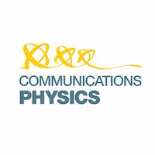
Communications Physics
Catalyzing discoveries in the realm of Physics and Astronomy.Communications Physics is a premier open access journal published by Nature Portfolio, dedicated to disseminating high-quality research in the field of Physics and Astronomy. Since its inception in 2018, the journal has rapidly established itself as a vital platform for innovative scientific communication, boasting an impressive Impact Factor and achieving Q1 status in the 2023 category of Physics and Astronomy (miscellaneous). With a Scopus rank of #31 out of 243, placing it within the 87th percentile, Communications Physics attracts a global audience of researchers, professionals, and students eager to engage with cutting-edge findings. The journal supports open access, ensuring that research is freely available to the public, which enhances its visibility and encourages broader discussions within the scientific community. Located in Berlin, Germany, Communications Physics aims to bridge the gap between various disciplines within physics, fostering interdisciplinary collaboration and inspiring future research endeavors.

JOURNAL OF THE KOREAN PHYSICAL SOCIETY
Connecting Innovators in Physical ScienceJOURNAL OF THE KOREAN PHYSICAL SOCIETY is a prominent academic journal dedicated to advancing the field of physics, published by the prestigious Korean Physical Society. With its extensive contribution to the scientific community since its inception in 1996, this journal serves as an essential platform for the dissemination of innovative research findings in various branches of physical science. Despite its current categorization in Q4 and a ranking reflecting its early-stage impact relative to peers, it remains a valuable resource for researchers, professionals, and students eager to explore developments in general physics and astronomy. The journal is accessible in both print and electronic formats, making it convenient for a global audience. Each issue aims to foster collaboration and knowledge-sharing within the field, ensuring that it remains relevant and instrumental in shaping future research directions. Located in South Korea, the journal continues to nurture a vibrant academic community, contributing to the ongoing dialogue in the global scientific arena.

Lithuanian Journal of Physics
Showcasing Excellence in Physics ScholarshipWelcome to the Lithuanian Journal of Physics, an esteemed publication helmed by the Lithuanian Physical Society, dedicated to advancing the field of physics and astronomy. Established in 2008 and continually publishing insightful research through 2024, this journal aims to provide a platform for high-quality scholarly articles that contribute to the understanding of various physical phenomena. With a steady presence in the academic landscape, the journal is currently ranked in the fourth quartile of the Physics and Astronomy category and is positioned at the 18th percentile in its Scopus ranking, reflecting its niche focus and accessibility for researchers and students alike. Although currently not operating under an open access model, the journal remains a vital resource for professionals seeking to stay informed on the latest developments in the field. The Lithuanian Journal of Physics invites contributions that inspire collaboration and innovation in physical sciences, making it an invaluable resource for the global scientific community seeking to expand knowledge within this dynamic field.
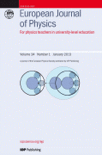
EUROPEAN JOURNAL OF PHYSICS
Advancing the Frontiers of Physics and AstronomyEuropean Journal of Physics, published by IOP Publishing Ltd, is a premier international journal serving the diverse field of physics and astronomy. With a commitment to advancing scientific knowledge since its inception in 1980, the journal provides a platform for original research articles, reviews, and topical discussions in various domains, including theoretical and experimental physics. Operating out of the United Kingdom, the journal has achieved a commendable Q2 ranking in the Physics and Astronomy (miscellaneous) category for 2023, reflecting its robust influence in the academic community, alongside a notable Scopus Rank that underscores its relevance in both the Social Sciences and General Physics and Astronomy fields. Although it does not currently offer open access, the journal's traditional publication model ensures rigorous peer review, maintaining high scholarly standards that are imperative for researchers, professionals, and students striving to stay ahead in their respective fields. Don't miss the opportunity to engage with cutting-edge research and contribute to the ongoing dialogue in physics by accessing this vital resource.

PHYSICAL REVIEW LETTERS
Connecting Researchers with Cutting-Edge DiscoveriesPhysical Review Letters, published by the American Physical Society, is a premier journal in the field of Physics and Astronomy renowned for its rapid dissemination of high-impact research findings. With a distinguished history dating back to 1958 and an impressive ranking of #13 out of 243 in the general physics category, it stands proudly within the Q1 quartile, placing it in the top 6% of journals in its field. The journal focuses on brief reports of significant fundamental research across all areas of physics, making it an essential resource for researchers, professionals, and students seeking to stay at the forefront of developments in their field. Although Physical Review Letters does not offer open access options, its rigorous peer-review process ensures a high standard of quality and relevance in its published articles. With an unwavering commitment to advancing the understanding of physical science, this journal is indispensable for those looking to make a genuine impact in their research endeavors.

Romanian Journal of Physics
Exploring the universe through rigorous research.Welcome to the Romanian Journal of Physics, a distinguished platform dedicated to advancing the field of physics and astronomy since its inception. Published by EDITURA ACAD ROMANE, this journal plays a pivotal role in disseminating high-quality research from Romania and around the globe, with an impressive impact factor that reflects its rigorous academic standards. With a focus on a broad range of topics in general physics and astronomy, it proudly maintains a Q2 ranking in its category for 2023, positioning itself among the top journals in the field. The journal, which has been converging valuable research contributions from 2008 until 2024, is accessible to a wide audience of researchers, professionals, and students interested in the latest developments and discoveries in physics. While it operates under a traditional publication model without Open Access, its commitment to quality research ensures that the contributions featured in its pages resonate well within the scientific community. We invite you to explore the rich findings published in the Romanian Journal of Physics and to engage with the vital discussions shaping the future of physics.
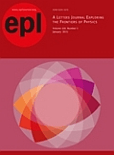
EPL
Shaping Tomorrow's Physics Through Collaborative ResearchEPL, a prominent journal published by IOP Publishing Ltd, stands at the forefront of the field of Physics and Astronomy. With a history of impactful contributions stretching from 1986 to 2024, EPL serves as a dynamic platform for researchers to disseminate their pioneering findings and innovative ideas. The journal, with a current category ranking of Q2 among its peers and a competitive Scopus rank of #101 out of 243 in the general physics and astronomy category, reflects its substantial reputation and contribution to the scientific community. Although it operates under a traditional subscription model, EPL's reach is extensive, enabling access to a diverse readership that includes academicians, industry professionals, and students alike. By fostering interdisciplinary collaboration and promoting rigorous research, EPL continues to play a vital role in shaping the future of physics and astronomy.

European Physical Journal Plus
Advancing Interdisciplinary Research for a Brighter TomorrowThe European Physical Journal Plus, published by Springer Heidelberg, is a reputable open-access journal that serves as a vital platform for innovative research across various disciplines, including physics, astronomy, and chemical engineering. With an impressive impact factor reflected by its Q2 ranking in both Fluid Flow and Transfer Processes and Physics and Astronomy (Miscellaneous) categories, this journal plays a crucial role in disseminating high-quality research findings. Since its inception in 2011, it has fostered interdisciplinary collaboration and encourages the exploration of fundamental principles and applications. The journal also boasts a respectable Scopus rank, indicating its solid influence and reach within the scientific community. Researchers, professionals, and students alike will find the journal to be an essential resource for staying abreast of advancements and trends in these dynamic fields, while its open-access model ensures that valuable insights are accessible to a broader audience.
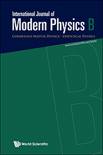
INTERNATIONAL JOURNAL OF MODERN PHYSICS B
Advancing the frontiers of Condensed Matter and Nonlinear Physics.The INTERNATIONAL JOURNAL OF MODERN PHYSICS B, published by WORLD SCIENTIFIC PUBL CO PTE LTD from Singapore, represents a pivotal platform for researchers in the fields of Condensed Matter Physics and Statistical and Nonlinear Physics. With a rich history spanning from 1996 to the present, the journal aims to foster cutting-edge research and innovative theoretical advancements, presenting high-quality peer-reviewed articles that address contemporary challenges in modern physics. Although it operates under a traditional access model, the journal maintains a notable impact, with a commendable ranking within the Scopus metrics – positioning it in the 63rd percentile for Statistical and Nonlinear Physics and the 53rd percentile for Condensed Matter Physics. The Q3 category ranking further underscores its relevance and growing stature in the scientific community. This journal is essential for physicists, researchers, and students seeking to keep abreast of the latest developments and theoretical insights in these dynamic areas of study.
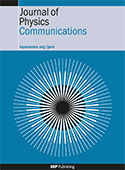
Journal of Physics Communications
Connecting Ideas, Inspiring DiscoveriesJournal of Physics Communications, published by IOP Publishing Ltd, serves as a significant platform for the dissemination of innovative research in the realm of physics and astronomy. Since its inception in 2017, this Open Access journal has fostered a collaborative environment, allowing researchers, professionals, and students to share their findings and ideas without barriers. With an ISSN of 2399-6528, the journal has established its credibility in the academic community, achieving a ranking of Q3 in the 2023 category of Physics and Astronomy (miscellaneous), as well as a respectable position in Scopus with a rank of #122 out of 243 in its field. The journal's focus is on bridging theoretical concepts and practical applications, making it an essential resource for those engaged in the evolving landscape of physics. The Journal of Physics Communications not only aims to advance knowledge but also to inspire interdisciplinary collaboration, inviting contributions from diverse areas within physics. Authors and readers alike will find this journal particularly beneficial to stay updated on emerging trends and innovative research.